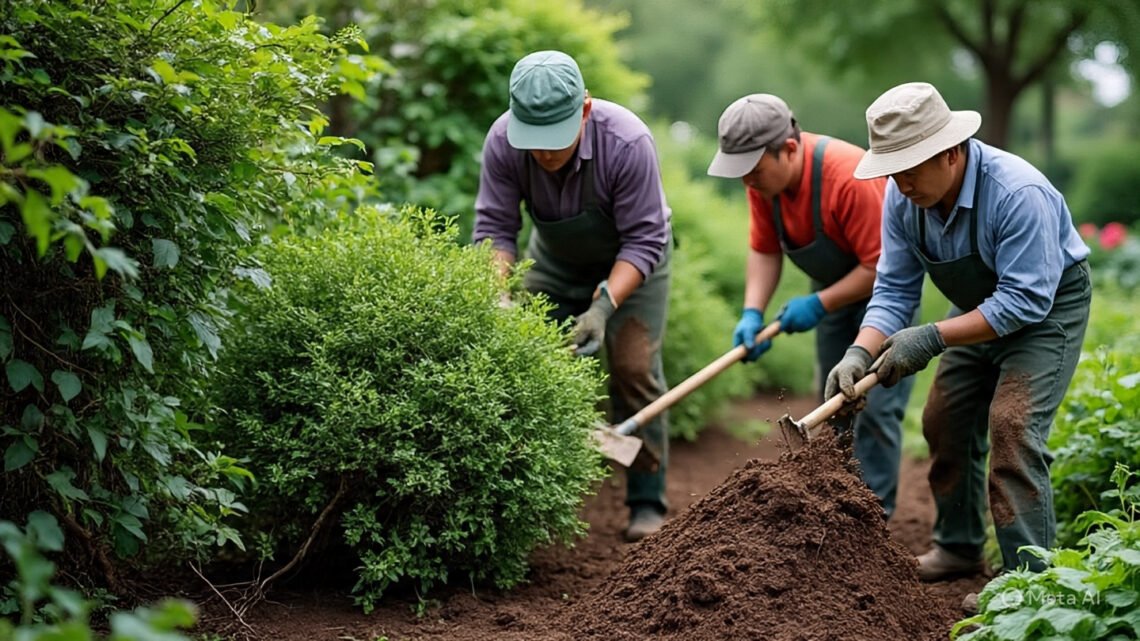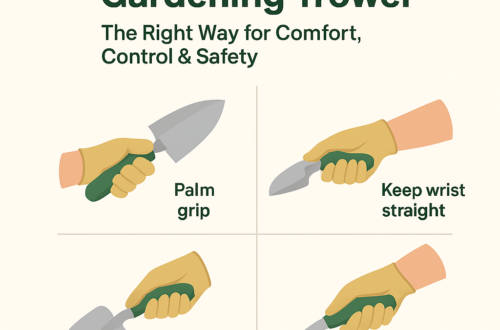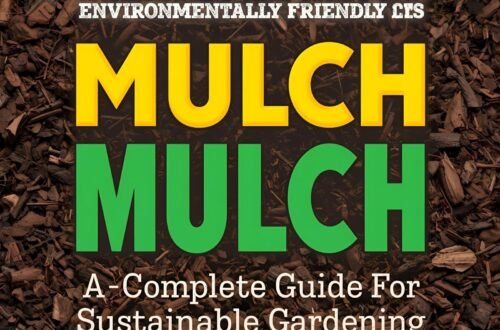Introduction: Understanding the Cost of Bush Removal
When it comes to enhancing the aesthetics and functionality of a garden, the removal of overgrown or unwanted bushes often becomes a necessary task. As a homeowner, it is essential to understand not only the process but also the financial implications of hiring professionals for such work. My personal experience in hiring gardeners to rip bushes out has provided me with valuable insights into the factors that contribute to the overall costs associated with bush removal.
The cost of engaging gardeners for bush removal can vary significantly based on several elements. Firstly, the size and type of the bushes play a crucial role in determining labor intensity and time requirements. For instance, larger or more invasive bush species may necessitate specialized tools and expertise, thus influencing the hourly rates or project quotes given by gardeners. This is why it is beneficial for homeowners to assess their specific needs before initiating the removal process.
Another important factor is the location of the garden. In urban areas where access to equipment may be limited, or where disposal of the removed materials can incur additional charges, costs tend to be higher. It is also prudent to consider the gardener’s experience level and reputation, as these can impact pricing structures significantly. Homeowners should seek multiple estimates to better understand the market rate, which often spans a wide range based on service offerings.
Additionally, preparing for potential additional costs such as cleanup or the subsequent planting of new vegetation can ensure a smoother experience. By being aware of how much to pay gardeners to rip bushes out, homeowners can make informed decisions that not only enhance their gardens but also adhere to their budgets. Recognizing these underlying factors will set the stage for understanding what to expect in terms of investment when deciding to rejuvenate one’s outdoor space.
Factors Influencing Bush Removal Costs
The cost of hiring gardeners to rip bushes out can vary significantly based on several influential factors. Understanding these elements is crucial for homeowners to gauge the potential expenses they might incur for bush removal services. One of the foremost factors is the size and type of the bushes being removed. Larger bushes or those with dense root systems require more effort and time to uproot, subsequently increasing the overall labor cost. For example, removing a small ornamental shrub may cost between $50 to $100, while larger, more stubborn bushes could range from $150 to $300 or more.
Another critical aspect to consider is the location of the property. Urban areas typically have higher service costs due to increased overheads like transportation and labor costs. In contrast, rural settings may offer lower pricing due to reduced operational expenses. Additionally, accessibility plays a substantial role in determining costs; the ease or difficulty of reaching the bushes directly affects the time it will take for the gardeners to execute the task. Properties with limited access or requiring specialized equipment could see increased labor charges.
Moreover, additional services like stump grinding or hauling away debris can also affect the final price. Many gardening companies offer package deals that include multiple services, which might be more cost-effective than opting for them individually. For instance, paying an extra $50 to $100 for stump grinding can prevent future growth and ensure a cleaner look in the garden, potentially saving money in the long run. In summary, the total amount to pay gardeners to rip bushes out is influenced by the bush’s characteristics, property location, accessibility, and any additional required services, making it advisable for homeowners to seek quotes based on their specific situation.
Average Pricing Models for Bush Removal
When considering how much to pay gardeners to rip bushes out, it is essential to understand the various factors that influence pricing. The costs associated with bush removal can vary substantially depending on the type, size, and condition of the shrubs being removed. Typically, smaller bushes may range from $50 to $150 for removal, whereas larger and more established bushes can cost between $150 and $400 or more. These variations often arise from the complexities involved in the removal process and the necessary equipment.
In addition to size, the type of bush also plays a significant role in determining removal costs. For instance, dense or thorny bushes may require more labor and specialized tools, leading to higher fees. Gardeners often charge by the hour, with typical rates falling between $50 and $100 per hour. This hourly rate can fluctuate based on the gardener’s experience, regional pricing differences, and the specific requirements of the removal task.
Alternatively, some gardeners and landscaping companies offer flat fees for bush removal. These prices may encompass labor, disposal of the removed plants, and any additional cleanup work needed. Flat fees can often be more predictable for homeowners, allowing for easier budgeting compared to hourly rates, which can lead to variable final costs depending on the time taken for the task.
Moreover, pricing can vary regionally, with urban areas typically seeing higher rates than rural locations. Factors such as labor costs, availability of services, and local market conditions are pertinent considerations in this context. Understanding these average pricing models will empower homeowners to make informed decisions when hiring professionals for bush removal and ensure that they are paying a fair rate reflective of the service provided.
DIY vs. Hiring Professionals: Cost Considerations
When considering how much to pay gardeners to rip bushes out, one vital decision revolves around the approach: undertaking the task as a DIY project or engaging professional assistance. Each option presents distinct advantages and disadvantages that can significantly impact both the overall cost and the quality of the outcome.
Opting for a DIY method may initially seem more cost-effective. Homeowners can save on labor costs, allowing them to allocate a budget strictly for equipment and disposal. Tools such as pruning shears, shovels, and wheelbarrows may be readily available or require a modest investment. Additionally, many individuals enjoy the satisfaction of completing a hands-on project and perceive it as a feasible way to reduce gardening expenses.
However, DIY bush removal is not without its challenges. The risks involved can lead to unforeseen expenses, particularly if a gardener lacks the necessary skills or knowledge. Improper removal techniques may damage surrounding plants, compromise soil integrity, or even lead to injuries. Moreover, disposal of large or invasive bushes often necessitates additional costs, potentially negating any initial savings.
In contrast, hiring professional gardeners, though initially higher in cost, can provide several long-term advantages. These experts possess the specialized tools and experience to handle the job efficiently and effectively, minimizing the risk of accidents or mistakes. They are equipped to ensure proper disposal, complying with any local regulations regarding yard waste. Additionally, professionals can often complete the task in a fraction of the time it would take an inexperienced individual, allowing for a quicker turnaround in restoring the garden’s aesthetic.
Ultimately, while DIY may seem appealing for those looking to save on labor costs, hiring professionals who specialize in bush removal can lead to better outcomes and may prove more economical when factoring in potential hidden costs and risks associated with self-performed tasks.
How to Choose the Right Gardener for Bush Removal
Selecting a reputable gardener for the task of removing bushes is an essential step for homeowners seeking to enhance the aesthetic appeal or functionality of their outdoor space. When considering how much to pay gardeners to rip bushes out, it is imperative to find a professional who not only meets budgetary constraints but also possesses the requisite skills and experience. Start by checking the credentials of potential gardening services, as licensed and insured professionals typically offer higher levels of service and reliability. This will protect you in case of any accidents or damages that may occur during the bush removal process.
Reading reviews and testimonials from previous clients can provide valuable insights into the quality of work and customer service a gardener offers. Look for consistent positive feedback regarding the gardener’s efficiency, demeanor, and ability to manage similar projects. Online platforms such as Google, Yelp, or specialized gardening forums can be excellent sources for these reviews. Furthermore, asking for referrals from friends or neighbors can lead to trustworthy recommendations.
Before settling on a gardening service, it is advisable to obtain multiple quotes. This practice will not only give you an understanding of the market rates for bush removal but also allow you to gauge the professionalism of each gardener. A detailed and transparent quote should outline all costs involved, including labor and any necessary materials. Additionally, discussing the specifics of the bush’s type and size with the gardener will enable you to assess their experience in dealing with similar jobs. A knowledgeable gardener will offer informed advice on the best practices for bush removal, which can enhance the overall success of the project.
Safety and Environmental Considerations
When hiring professionals to manage bush removal, it is crucial to consider the safety and environmental implications associated with the task. Removing bushes can be labor-intensive and may present various hazards for gardeners, from potentially harmful plants to equipment-related injuries. These professionals should be equipped to assess the area they are working in and identify any risks, such as uneven ground, proximity to power lines, or the presence of invasive plants that may pose a threat to the local ecosystem.
Utilizing safe methods for bush removal is essential. Gardeners should employ appropriate tools and techniques to ensure they are minimizing their risk of injury. This includes using proper protective gear, such as gloves, goggles, and ear protection, along with following safety protocols during the task. Additionally, it is advisable to look for garden professionals who have received training in first aid and emergency procedures, as preparedness can help mitigate any unforeseen incidents during the process.
Moreover, environmental considerations play a pivotal role in bush removal. Eco-friendly practices should be prioritized, such as utilizing organic methods for bush management and adopting proper disposal techniques to minimize waste. Gardener services that emphasize recycling or composting the removed bushes can contribute positively to the environment and demonstrate a commitment to sustainability. It is important to ascertain how much to pay gardeners to rip bushes out while also ensuring that they adhere to environmentally responsible methods.
When selecting a gardener for bush removal, inquire about their practices and policies regarding environmental stewardship. Focus on those who prioritize sustainability by using biodegradable products and disposing of organic waste responsibly. By selecting a gardener who values safety and environmental considerations, homeowners can ensure that their landscaping projects proceed with minimal risk and maximum eco-friendliness.
Post-Removal: What to Expect and Next Steps
Once gardeners complete the process of removing bushes, homeowners are often left with a clear space that may need further attention. Understanding what to expect after bush removal is crucial for formulating a suitable plan for the area. Typically, the ground where the bush was rooted will be uneven, with possible leftover roots, debris, or soil compaction. It’s important to assess the condition of the soil, as options for replanting or landscaping will depend largely on its quality.
Homeowners should first evaluate whether the soil can sustain new plant growth. If the soil appears compacted or contains large clumps of roots, it may require tilling or loosening to ensure optimal conditions for the next plants. In many instances, introducing organic matter or compost can significantly enhance soil structure and fertility. Additionally, testing the soil for pH levels can help determine the best types of plants for the area, as some species prefer acidic or alkaline conditions.
When considering replanting, homeowners have various options. They can opt to replace the removed bushes with new shrubs or explore alternatives such as flowering plants, ornamental grasses, or even small trees to create a vibrant landscape. Transitioning to a different type of plants not only adds visual interest but can also enhance the ecological balance of the garden.
However, there are challenges that may arise post-removal. Weeds may quickly fill the void left by the bushes, so vigilance is essential. Homeowners can manage this by laying down mulch or landscaping fabric to suppress unwanted growth while maintaining the aesthetic appeal. Regular monitoring and maintenance will be necessary in the months following bush removal to ensure that the newly established plants thrive.
Frequently Asked Questions About Bush Removal Costs
The process of removing bushes from your garden often raises various questions regarding costs and associated services. One common inquiry concerns what services are included when gardeners quote their prices for bush removal. Typically, a comprehensive service package might include the removal of the bush, disposal of debris, and cleaning up the area afterward. However, it’s essential to clarify these details with your chosen gardener to avoid any surprises.
Another important consideration is the potential for hidden fees. Many homeowners are unaware that the final cost of bush removal can include factors such as travel expenses, special equipment rental, or additional charges for disposing of larger plants or deep-rooted bushes. Being informed about these possibilities can help you make a more accurate estimate when asking how much to pay gardeners to rip bushes out.
When it comes to negotiating prices, it is crucial to understand that some gardeners may adjust their estimates based on factors such as your location, the size and species of the bushes, as well as the market demand for landscaping services in your area. Engaging in a discussion about your specific circumstances can often yield beneficial results. Gathering multiple quotes from different service providers will also provide a clearer picture of the average rates.
Estimating the final cost of bush removal before hiring a gardener involves assessing the size, type, and number of bushes you wish to remove. Researching the cost of similar services in your region can be helpful. Additionally, consider any extra services that may be beneficial, such as stump grinding or soil amendment. Familiarizing yourself with these aspects will enable you to confidently discuss and decide how much to pay gardeners to rip bushes out, ensuring a satisfactory outcome for the task at hand.
Conclusion: Making Informed Decisions for Your Garden
In contemplating how much to pay gardeners to rip bushes out, it becomes essential to assess various factors that influence the total cost. As detailed throughout this guide, the complexity of the task, the size of the bushes, and the local market rates play crucial roles in determining appropriate pricing.
Understanding the significance of these costs can empower homeowners to embark on garden maintenance projects with greater confidence. A well-maintained garden not only enhances the aesthetic appeal of a property but also increases its market value. When hiring a professional gardener, it is vital to obtain multiple quotes and inquire about their experience and equipment, as these can substantially affect both the price and the quality of service received.
Additionally, consider the long-term benefits of investing in a gardeners’ expertise. By selecting a skilled professional, one can ensure that the process of bush removal is conducted efficiently and safely, minimizing the risk of damage to the surrounding landscape or the potential for future growth problems. Investing time in comparing options allows for informed decisions that align with individual preferences and financial constraints.
In conclusion, knowing how much to pay gardeners to rip bushes out is just one aspect of gardening management. By prioritizing the right choices that fit your specific garden needs and budgetary considerations, you can ultimately contribute to a healthier and more attractive outdoor space. Re-evaluating your garden periodically and seeking professional assistance when necessary will pay off by transforming your landscape into a beautiful, flourishing environment.
Discover more from Ecorganicas
Subscribe to get the latest posts sent to your email.





